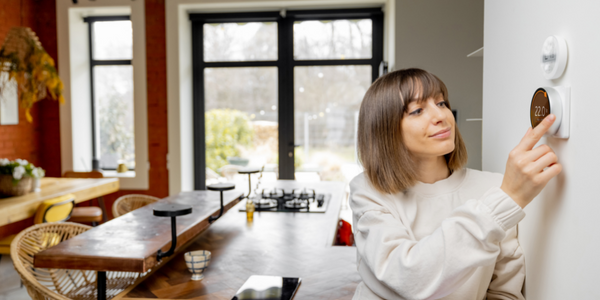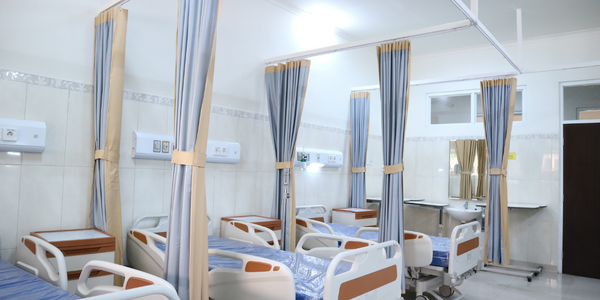公司规模
Large Corporate
地区
- Europe
产品
- IBM TRIRIGA®
技术栈
- Integrated Workplace Management System
实施规模
- Enterprise-wide Deployment
影响指标
- Cost Savings
- Productivity Improvements
- Environmental Impact Reduction
技术
- 功能应用 - 企业资源规划系统 (ERP)
适用功能
- 设施管理
用例
- 楼宇自动化与控制
服务
- 系统集成
关于客户
客户是一家欧洲制造商,拥有大量工作场所组合,包括数百个地点和超过 1500 万平方英尺的面积。1999 年,该公司基本上是一个临时工作场所组织,工作场所服务完全分散到运营区域。每个区域都使用自己的系统,运营流程、标准或绩效指标几乎没有一致性。房地产管理与设施管理分开运作,两个职能之间几乎没有协调。该公司部署了 65 种不同的点解决方案,工具或企业系统之间几乎没有互操作性。
挑战
这家欧洲制造商面临着增长的压力,同时还要实现激进的成本削减目标。该公司的工作场所服务是分散的,每个地区都使用自己的系统,运营流程、标准或绩效指标几乎没有一致性。房地产管理与设施管理分开运营,两个职能之间几乎没有协调。该公司部署了 65 种不同的点解决方案,这些工具或企业系统之间几乎没有互操作性。迫切需要改变工作场所管理的方向。
解决方案
该公司从一个分散的区域设施和房地产组织转变为一个完全集中和矩阵化的组织。这使得与区域业务部门能够密切协调和配合。该公司实施了 IBM 的集成工作场所管理系统 (IWMS) IBM TRIRIGA®,该系统帮助该组织高效管理其房地产组合并优化空间利用率。IBM 的 IWMS 系统跟踪空间利用率,包括在家办公的员工,因此可以系统地跟踪和扩展工作场所资源以满足组织的增长。该公司还利用 IWMS 系统跟踪绩效的四个维度:财务、客户、人员和工作场所流程。
运营影响
数量效益

Case Study missing?
Start adding your own!
Register with your work email and create a new case study profile for your business.
相关案例.

Case Study
Turning A Stadium Into A Smart Building
Honeywell created what it called the “intelligent system” for the National Stadium in Beijing, China, turning the venue for the opening and closing events at the 2008 Summer Olympics into a “smart building.” Designed by highly controversial artist Ai Weiwei, the “Bird’s Nest” remains one of the most impressive feats of stadium architecture in the world. The 250,000 square meter structure housed more than 100,000 athletes and spectators at a time. To accommodate such capacity, China turned to Honeywell’s EBI Integrated Building Management System to create an integrated “intelligent system” for improved building security, safety and energy efficiency.

Case Study
BACnet enabled Wireless Temperature Monitoring System
Client offered a Temperature Monitoring System which consists of Wireless Transmitters and Application Software. Third party BACnet Application such as a Building Automation System needs access to vital parameter such as temperature, humidity, CO2, etc., measured by wireless sensor devices. Client needed a solution to allow data exchange from its Temperature Monitoring System with BMS.

Case Study
Medanta the Medicity
Medanta is one of India's largest multi-super specialty institutes located in Gurgaon, India. Some of the key challenges facing Medanta included: - No Monitoring & Control over Energy Use, Indoor Air Quality, Indoor Lighting Quality & Noise Levels. - No compliance monitoring of temperature & pressure in critical care wards. - Energy bills were a surprise with no way to forecast energy costs. - Missing data & insights that could be used for targeting areas of improvement. - Existing Billing Management System (BMS) was inflexible and could not be used across the enterprise to serve the needs of different users. Requirements Based on these challenges, Medanta was looking for a comprehensive solution to Monitor & Control: - Energy Usage - Power Generators - Clean Rooms - HVAC Temperature - Chiller Temperature - Hydrant Pressure - Air Quality & Noise Levels - Critical Wards

Case Study
Sirqul and Catalyst Workplace Activation Reveal the Future of Smart Offices
This partnership will disrupt the “traditional” office furniture conversation by examining the intersection of people, place, and technology. We realize it is increasingly evident that the design of spaces is an enabler to meaningful interactions between people and fosters a sense of community and culture by taking on the challenges of designing for a more productive, collaborative, and inspiring workplace, leveraging technology to process data on how people work, communicate and engage with one another.

Case Study
Ensures Cold Milk in Your Supermarket
As of 2014, AK-Centralen has over 1,500 Danish supermarkets equipped, and utilizes 16 operators, and is open 24 hours a day, 365 days a year. AK-Centralen needed the ability to monitor the cooling alarms from around the country, 24 hours a day, 365 days a year. Each and every time the door to a milk cooler or a freezer does not close properly, an alarm goes off on a computer screen in a control building in southwestern Odense. This type of alarm will go off approximately 140,000 times per year, equating to roughly 400 alarms in a 24-hour period. Should an alarm go off, then there is only a limited amount of time to act before dairy products or frozen pizza must be disposed of, and this type of waste can quickly start to cost a supermarket a great deal of money.




